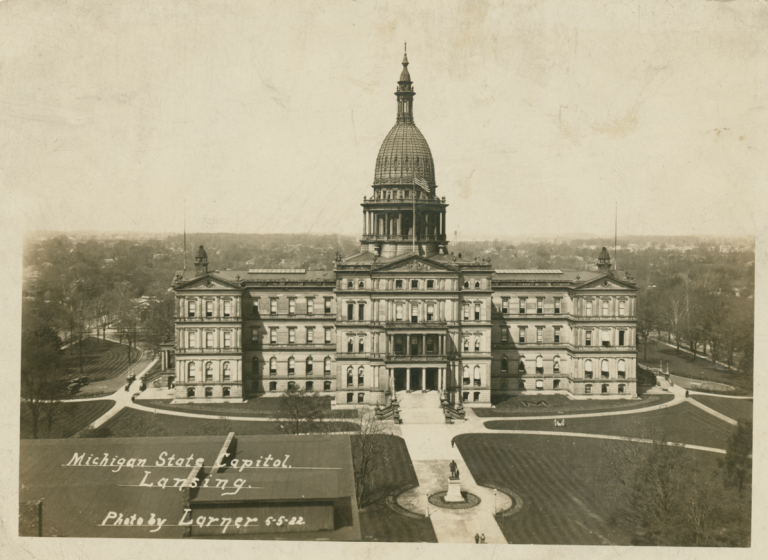Expert discusses opioid addiction and its treatment
Dr. David McGreaham, MD, spoke to members of the Rotary Club of Pinconning and Standish on Thursday, Jan. 9, on the Fentanyl death epidemic, including its causes and treatment.
McGraeham is from Traverse City and was formerly the Chief Medical Officer at Munson Medical Center. He now directs the Northern Michigan Opioid Response Consortium, NMORC, based in Gaylord.
He said the goal of the NMORC is to reduce substance-use disorders in the northern Lower Peninsula. Arenac County is at the southern edge of the region it serves.
He explained an opiate is a compound present in drugs like opium, morphine, and codeine. Some of these drugs are used to relieve pain. The poppy is the source of all opioids.
McGraeham stated in the 1990s, pharmaceutical companies marketed opioids as non-addictive so the medical community began to make use of these products. The claim turned out not to be true—many of the drugs are actually quite addictive—and when this was discovered, the legally prescribed use of the drugs declined significantly. Unfortunately, people already addicted began to search for alternatives.
In 2015, 50,000 Americans died of opioid overdoses. In 2023, that number was 105,000.
In Arenac County, drug overdoses have been down during the last four years, in part because of the administration of a drug called Naloxone. However, overdoses increased during that same period in Iosco County.
Naloxone is a medicine that rapidly reverses and blocks the effects of an opioid overdose. It is marketed as Narcan, a nasal spray, that can quickly restore normal breathing to a person if their breathing has slowed or stopped because of an opioid overdose.
Narcan is administered by spraying it directly into the nostril. An effort is underway to place Narcan in locations where addicted people are likely to be found—in medical facilities, community centers, police stations, schools, etc.
It is legal for non-medical people to administer Narcan to people who have overdosed since it has no negative effects.
While use of some illegal opiates has moderated in recent years, one drug—Fentanyl—has increased. Fentanyl usually appears as a white powder. As little as 2 mg of the drug can kill a person. It is a synthetic opiate made in illegal labs, often in Mexico.
In 2023, 39 million Fentanyl tablets were seized by immigration officials at the southern U.S. border, much of it smuggled in by passenger cars or by individuals who walk across the border carrying the drug on, or even inside, their bodies. It is also shipped through the mail from Europe, often from Germany.
Dr. McGreaham gave the definition of “addiction” as a medical disease that messes with the brain. Over time, people with long-term addictions will show a physical change to the brain. But addiction is not limited to illegal drugs. The definition also includes such things as alcoholism, legal drugs over-use, smoking, vaping, even gambling.
When engaged in any pleasurable activity a person’s brain releases a surge of dopamine. The brain remembers this pleasurable surge and associates it with whatever activity triggered it.
The over-use of drugs like opioids, cocaine, nicotine, alcohol, etc, causes dopamine to flood the reward pathway in the brain at 10 times the rate of dopamine released due to a natural reward trigger. The brain remembers this extra surge and associates it with the addictive substance that caused it.
He stressed that all addictions are treatable. Treatment can be multi-faceted, including residential treatment (removing the individual from an environment that encourages addictive behavior), counseling, recovery coaches, support groups, support by family and friends, social support such as employment and transportation, and medication.
Withdrawal from a drug can take as long as 90 days, but addictions can return without the types of support listed above.
In rural areas like northern Michigan, access to such support is often less available.
Fortunately, in this region, there are medical facilities to assist with treatment, including several in Bay City such as Bay-Arenac Behavioral Health and private clinics, Sterling Area Health Center, and MyMichigan Health in West Branch, among others.
Dr. McGraeham stated that something that worries him is the normalizing of certain potentially dangerous behaviors in public—marijuana use, heavy alcohol use, gambling, vaping—because it sets such a bad example for kids.
Glorifying these behaviors makes them much more attractive to young people. He also noted that the use of an over-the-counter product, Kratom, can also be a serious problem.
It is marketed for pain relief and for its euphoric effects, but with high usage it, too, can become addictive.
He stressed that addiction is a medical disease that can be treated, but for people affected by it to deal with their disease, they need lots of support from family, friends, and the community.




